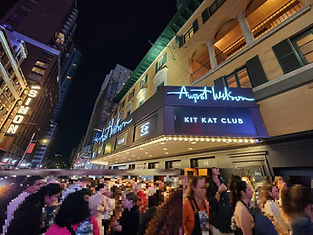K-Musical Culture
23 Musical Theatres
Korea
In Seoul, there are many theaters dedicated to stage musicals. Some venues were built specifically for musicals, while others began as concert halls or playhouses and were later renovated to meet the demands of the genre’s growing popularity. Renovations often include the addition of more speakers, upgraded audio systems, expanded orchestra pits, and improved acoustic layouts. These efforts reflect how musicals have become one of the most important cultural industries in Korea.
Outside of Seoul, purpose-built musical theaters also play an important role. Dream Theatre in Busan, opened in 2019, is the largest venue of its kind outside the capital and regularly presents licensed blockbusters and touring productions. Similarly, Daegu Opera House is a landmark venue in the southeast, hosting both musicals and operatic works, and helping bring large-scale productions to regional audiences.
The map below provides a reference for major musical theaters in Korea. While these large venues host licensed blockbusters and original works alike, smaller theaters concentrated in Daehakro and Hongdae also play a crucial role in sustaining the city’s vibrant performing arts culture.
Major Theater Locations in Korea
Major Theater Locations in Korea
Unlike Broadway or the West End, Seoul’s big theaters are not tightly packed into one entertainment district. Instead, they are spread across the city, with landmark venues such as Charlotte Theatre, COEX Artium, and Blue Square Theatre purpose-built for musicals, while many others remain multi-purpose halls. By contrast, Daehakro has become Korea’s version of an Off-Broadway district. Once home to Seoul National University’s main campus, the neighborhood was transformed in the late 1970s into a park and cultural hub, and since then it has flourished with small theaters showcasing new and experimental works.
Today, Daehakro is filled with musicals, plays, and other performances. Tickets there are generally less expensive than for large-scale licensed shows, and the smaller auditoriums provide close proximity to the stage. This creates an atmosphere well suited to experimental works as well as intimate, long-running productions. Some musicals and plays have been staged for over a decade on open-ended runs, such as Laundry (빨래, 2005– ), Finding Mr. Destiny (김종욱찾기, 2006– ), and the play Cats on the Roof (옥탑방 고양이, 2010– ).
Beyond Seoul, regional theaters such as Busan’s Dream Theatre, Daegu Keimyung Art Center and Daegu Opera House demonstrate how Korea’s musical culture extends nationwide. These venues allow audiences outside the capital to enjoy world-class productions and contribute to the growing popularity of musicals across the country.

Charlotte Theatre (Jamsil Station, Line 2 & Line 8)

Blue Square (Hangangjin Station, Line 6)

Chungmu Arts Center (Sindang Station, Line 2 & Line 6)

Universal Arts Center (Achasan Station, Line 5)

Dream Theatre, Busan (Beomnaegol Station, Line 1 / International Financial Center·Busan Bank Station, Line 2)

NOL Uniplex (Hyehwa Station, Line 4)
Broadway
Broadway theaters are concentrated in New York City’s Theater District, primarily around Times Square and along Broadway between 41st and 54th Streets. What defines a Broadway house is not only its location and professional union status, but also its eligibility for the Tony Awards. More than 40 theaters are officially recognized as Broadway houses, and productions staged there qualify for the industry’s highest honors. By contrast, shows at prestigious venues outside the system—such as Lincoln Center’s Buena Vista Social Club—are ineligible, however distinguished the venue may be.
Most Broadway houses were constructed in the early 20th century and are now protected as historic landmarks. Renovations therefore focus on technical upgrades and accessibility improvements, while seat counts, restrooms, and lobby spaces remain unchanged. This preservation often results in long restroom lines and limited public areas compared to newer international venues. Exceptions include the Gershwin Theatre (1972) and the Minskoff Theatre (1973), which were built more recently and feature larger foyers, lobbies, and restroom facilities designed with modern audiences in mind.
Beyond Broadway, New York also sustains Off-Broadway and Off-Off-Broadway theaters, which nurture experimental works and smaller productions. Much like Daehakro in Seoul, these venues expand the theatrical ecosystem, ensuring space for new writing and diverse performance styles. Together, Broadway and its surrounding tiers balance blockbuster productions with creative innovation, reinforcing New York’s role as both a commercial powerhouse and an artistic incubator.

Majestic Theatre, 44th and 7th (245 West 44th Street, New York, NY)

Winter Garden Theatre, 50th and Broadway (1634 Broadway, New York, NY)

Richard Rodgers Theatre, 46th between 8th and Broadway (226 West 46th Street, New York, NY)

August Wilson Theatre, 52nd between Broadway and 8th (245 West 52nd Street, New York, NY)

Gershwin Theatre, 51st and Broadway (222 West 51st Street, New York, NY)

Lunt-Fontanne Theatre, 46th between 8th and Broadway (205 West 46th Street, New York, NY)

